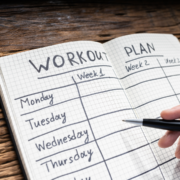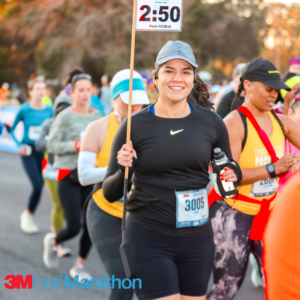Get ready to kick off the 2025 Austin International Half, formerly the 3M Half Marathon, with a week full of excitement, surprises, and unbeatable deals! Our Launch Week is packed with daily offers, special events, and giveaways designed to get you pumped for the race. Whether you’re a seasoned runner or gearing up for your first half marathon, there’s something for everyone. Here’s a sneak peek at what you can expect during this incredible week:
Friday, June 21, 2024: BIG ANNOUNCEMENT DAY!
We are celebrating our new name and 2025 Registration is offically open! So secure your spot early and join us in making history! Today’s special offer is $10 off registration, so be sure to sign up today with code “LaunchAIH“.
Saturday, June 22, 2024: Win a Hotel Night at Hyatt Place Austin Arboretum!
Enter for a chance to enjoy a luxurious stay at our host hotel right next to the start line.
PLUS, a special event in partnership with The Trail Conservancy, where free snow cones will be handed out to runners on the Hike-and-Bike Trail at Auditorium shores from 8:00 AM – 10:30 AM
Sunday, June 23, 2024: Chance to Win 1 of 2 SPIBelt Bundle Giveaway!
Chance to win 1 of 2 SPIbelt bundles with a dual pocket SPIbelt pro, SPIbelt hat, H2O handheld. Perfect for keeping your essentials secure on your runs.
Monday, June 24, 2024: Austin Marathon Combo Deal!
Register for both races and save an additional $10 off!
Tuesday, June 25, 2024: Chance to Win a 1 of 2 BPN Endurance Stacks!
Get geared up with premium fitness supplements and gear.
Wednesday, June 26, 2024: FREE Personalized Name Plate!
Get your name and finish time on your finisher medal! An $11.99 value!
Thursday, June 27, 2024: FREE Shuttle Bus Ticket!
Enjoy hassle-free transportation from the finish line back to the start parking garage.
Friday, June 28, 2024: Chance to Win a Fleet Feet Prize Pack!
Gear up with top-notch running gear and accessories.
Stay fast, stay fierce!
Group Run Schedule
Join us for group runs throughout the week to stay motivated and connected with the running community. Here’s the schedule:
| Group Run | Time Slot | Location |
|---|---|---|
| Friday, June 21, 2024 | ||
| Comedor Run Club | 10:00 AM | 501 Colorado St (Comedor Restaurant), Mileage: 2 or 3 mile options |
| Saturday, June 22, 2024 | ||
| Rise and Run South Austin | 5:30 AM | REI (601 N Lamar Blvd) |
| Gilbert’s Gazelles | 5:45 AM | Meet at the plaza area at the corner of Sandra Muraida Way and Electric Avenue. Parking validation available for those parking in the Gables garage |
| Austin Fit (USA FIT Austin) | 6:30 AM | 611 S Congress Ave, Austin TX 78704. (Congress Square II rear parking lot) |
| Twenty-Six Two Phil’s Hills Workout | 7:00 AM | 7am-9:30 run at JLL Plaza (1703 West 5th St) |
| ATX Runners | 7:00 AM | The Zero, 676 W Riverside. Distances range from 5-18 miles. |
| 5RUN2 | 7:00 AM | Revolucion Downtown (207 San Jacinto Blvd Suite 200), 7 or 10 miles |
| Pfun Runners | 7:00 AM | lot behind West Pecan Coffee + Beer, 3.1-6.2 miles |
| Austin Front Runners | 10:00 AM | Meet at the Rock under MoPac Overpass (2102 Stephen F. Austin Dr) |
| Sunday, June 23, 2024 | ||
| Monday, June 24, 2024 | ||
| Comedor Run Club | 10:00 AM | 501 Colorado St (Comedor Restaurant), Mileage: 2 or 3 mile options |
| Austin Tri Club | 6:00 PM | Mean Eyed Cat. 3-6 miles |
| Rise and Run South Austin | 6:30 PM | The Shops at Onion Creek 11215 S IH-35 (park near Craigo’s) |
| Tuesday, June 25, 2024 | ||
| Rise and Run South Austin | 5:00 AM | 500 West William Cannon (park near Mcdonalds & ATM Machine) |
| Morning Jos | 6:00 AM | Jos Coffee 1300 S Congress Ave, Austin, TX 78704 |
| RAW Running | 7:00 PM | 1621 W 5th St, Austin, TX 78703 |
| ATX Runners | 6:00 PM | The corner of west 10th St & Wayside (904 Wayside, Austin, TX 78703), track workout |
| Launch Party with EIGHT Beer & Run with RAW Running | 7:00 PM | Mean Eyed Cat (1621 W 5th St, Austin, TX 78703) |
| Wednesday, June 26, 2024 | ||
| Buda Running Club | 5:00 AM | 206 N Main St, Buda TX 78610 – Main Street downtown Buda at the Windmill parking lot (free parking) |
| Rise and Run South Austin | 5:30 AM | Fleet Feet (5900 W Slaughter Ln) |
| 5RUN2 | 6:30 AM | Kerbey Lane South Lamar, 5K & 5 Mile |
| Comedor Run Club | 10:00 AM | 501 Colorado St (Comedor Restaurant), Mileage: 2 or 3 mile options |
| East Side Beer Runners | 6:30 PM | starting at Central Machine Works |
| Thursday, June 27, 2024 | ||
| Rise and Run South Austin | 5:00 AM | CVS 520 W Slaughter Ln |
| Austin Front Runners | 6:00 PM | Meet at the Rock under MoPac Overpass (2102 Stephen F. Austin Dr) |
| ATX Runners | 6:00 PM | The corner of west 10th St & Wayside (904 Wayside, Austin, TX 78703), 3-6 mile tempo run |
| Friday, June 28, 2024 | ||
| Buda Running Club | 5:00 AM | 206 N Main St, Buda TX 78610 – Main Street downtown Buda at the Windmill parking lot (free parking) |
| Fleet Feet Seaholm Run | 6:30 AM | 211 Walter Seaholm Dr, Austin, TX 78701 |
Join us for these events and make the most of the 2025 Launch Week!


 2. Gear Tips
2. Gear Tips 3. Interval Training Techniques
3. Interval Training Techniques 4. Listening to Your Body
4. Listening to Your Body 5. Mental Strategies
5. Mental Strategies

